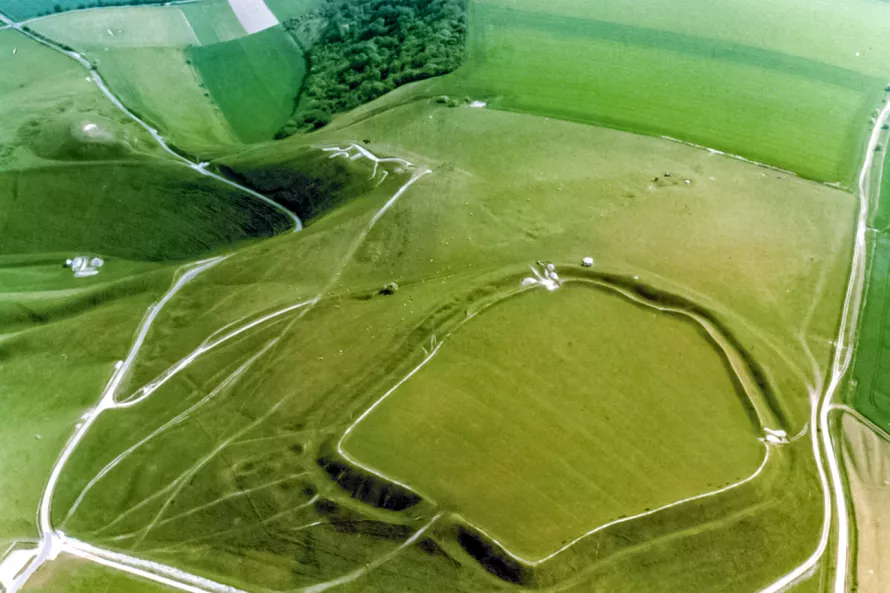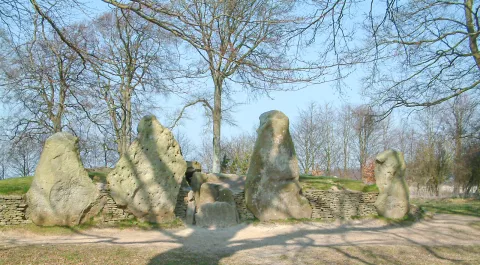The Ridgeway
The ancient trackway, the Ridgeway, runs past White Horse Hill and may once have passed through the hillfort before its eastern entrance was blocked. The Ridgeway runs along the chalk scarp eastwards, to cross the Thames near Goring and join the Chilterns. To the west is passes close to the great henge monument at Avebury.
The age of the Ridgeway is much debated. It may have emerged as a routeway for migrating reindeer and horses 12,000 years ago. It is mentioned in Anglo-Saxon charters, however, the clearly defined path visible today is much more recent.
Wayland’s Smithy
Less than 3 kilometres from White Horse Hill is the megalithic chambered tomb of Wayland’s Smithy. Huge sarsen stones - a hard sandstone found eroding through the younger chalk – were dragged to the site, probably from the nearby dry valley by Ashdown House. A scatter of sarsen stones can still be seen lying in the valley.
Wayland’s Smithy has two phases. The earlier, smaller tomb dates to about 3700 BC. Several of the human remains were pierced by flint arrowheads, suggesting that they were killed in a raid. Flint nodules occur naturally in the chalk, and this silicate was for millennia worked by humans into razor sharp blades, scrapers, axes and projectile points.
Later, about 3500, the larger mound was placed over the earlier tomb marked with huge sarsen stones blocking a stone chamber. Unfortunately, the human remains and Neolithic finds are long gone, scattered by grave robbers.
The name ‘Wayland’s Smithy’ refers to the Norse and Anglo-Saxon smith god and is recorded in Anglo-Saxon boundary charters 1000 years ago. Local legend has it that a horse tethered outside ‘the smithy’, with a financial offering, will be re-shod. The chambered tomb seems to be part of the elaborate landscape mythology, linking ancestral monuments to the White Horse itself.



